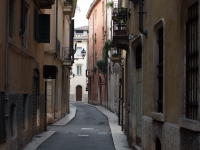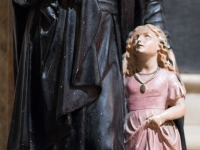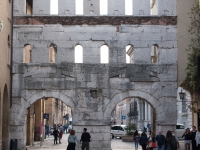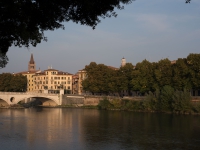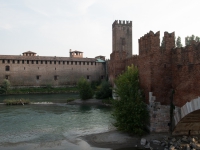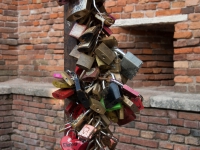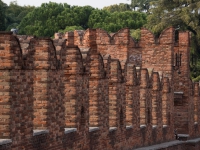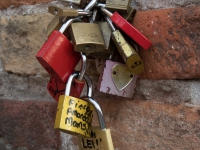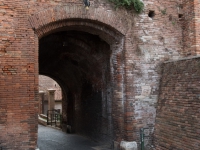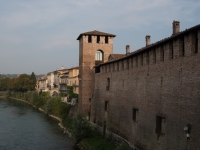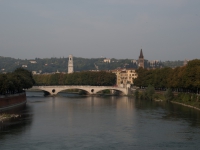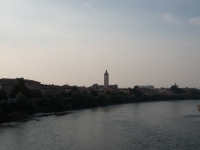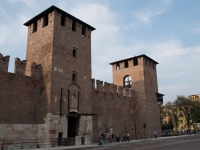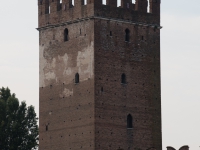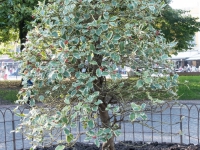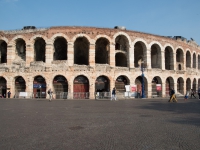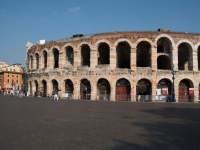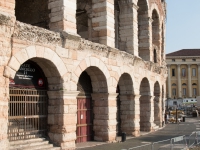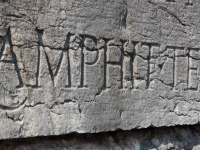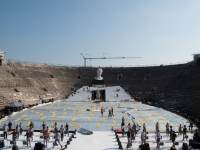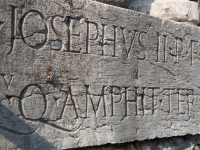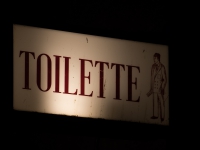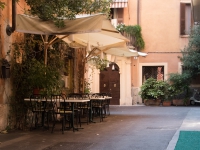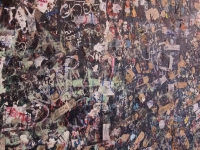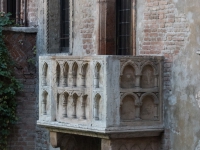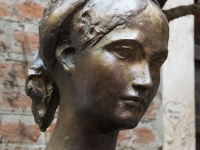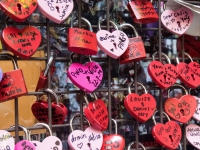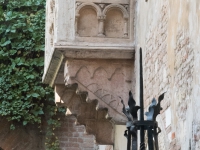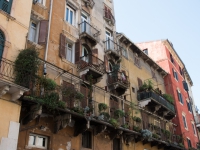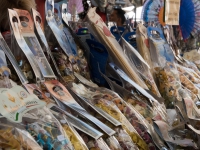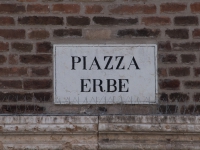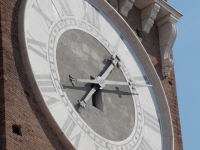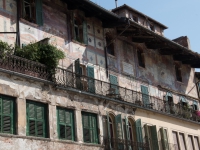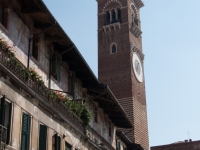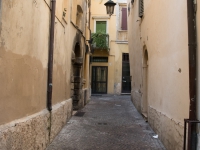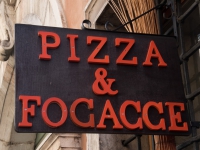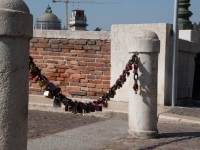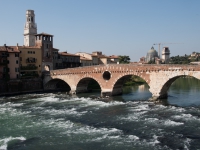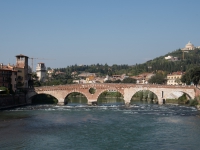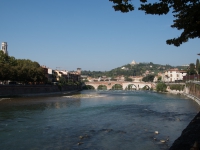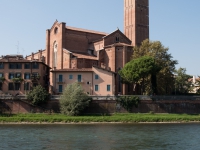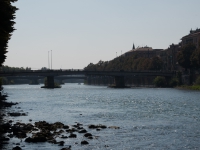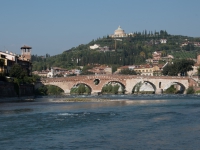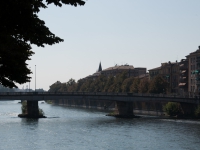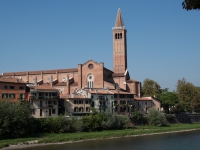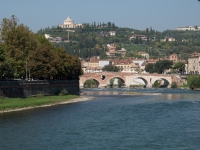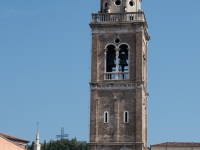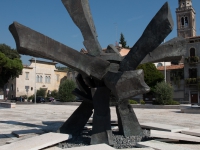Today, we took it quite easy and had a bit of a lie-in. After a thrilling breakfast with cereal, fresh fruit, bread, honey, jam, etc., we packed our rucksacks and headed for Verona, a merely 40 kilometers away from our rented appartment at The Garda Villiage, Sirmione, Lake Garda.
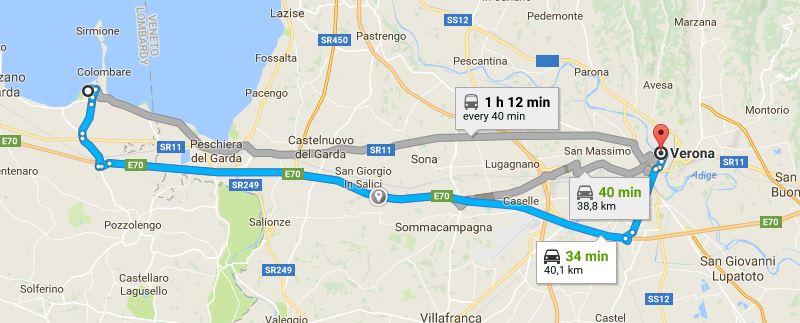
Verona is a city on the Adige river in Veneto, Italy. It has approximately 265.000 inhabitants and is one of the seven provincial capitals of the region. It is one of the main tourist destinations in northern Italy, owing to its artistic heritage, its annual fairs, shows and last but least its operas. During the lyrical season, operas are typically showin in the Arena, the ancient amphitheater built by the romans.
The city has a lot of valuable and important historical buildings, a circumstance that has lead to it being named a UNESCO World Heritage Site. A selection of these are:
[1] Piazza delle Erbe – near the Roman forum was rebuilt by Cangrande I and Casignorio della Scala I, lords of Verona, using material from Roman spas and villas.
[2] The Roman amphitheatre – the Arena, found in the city’s largest piazza, the Piazza Bra. Completed around 30 AD, it is the third largest in Italy after Rome’s Colosseum and the arena at Capua. It measures 139 metres long and 110 metres wide, and could seat some 25.000 spectators in its 44 tiers of marble seats.
[3] The Porta Borsari – an archway at the end of Corso Porta Bosari. This is the facade of a 3rd-century gate in the original Roman city walls. The inscription is dated 245 AD and gives the city name as Colonia Verona Augusta. Corso Porta Borsari, the road passing through the gate is the original Via Sacra of the Roman city. Today, it is lined with several Renaissance palazzi and the ancient Church of Santi Apostoli, a few metres from Piazza delle Erbe.
[4] Romeo and Juliet’s home in Verona – Verona was the theatre where the tragic love story between Romeo and Juliet took place.
[5] Verona bridges – The Adige river flows through and bisects Verona. The oldest of all bridges is the Stone bridge, called “Ponte Pietra”, which was built during the Roman era and which still today links the Roman Theatre to the city centre. The other representative bridge is the “Ponte Scaligero”, in front of the Castelveccio. It was built in the second half of the 14th century with three unequal arches.

